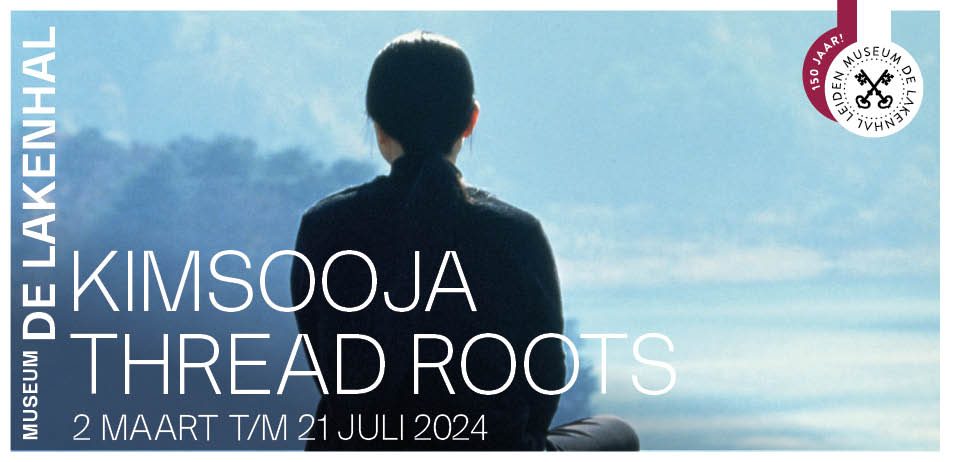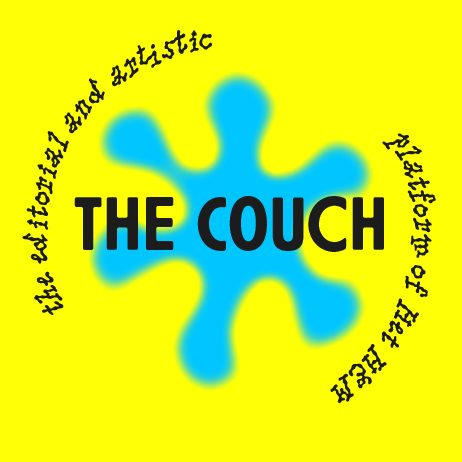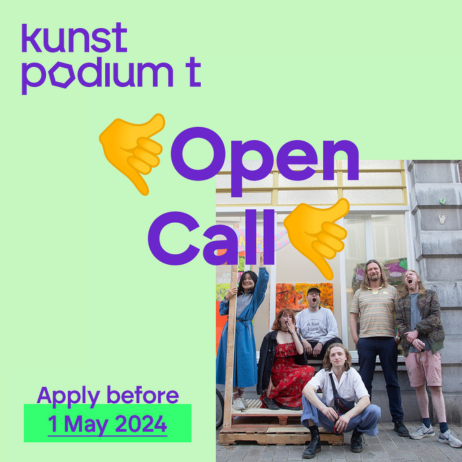Contested Site – interview with Antonis Pittas
Ioanna Gerakidi: ‘Untitled (I want us to stop talking about tactics and stop putting each other down and stop getting personal). That’s the (un)title of your new work for the exhibition Back to the Future at Annet Gelink Gallery. I could regard the title as a key comment to the political and social mentality of the Greek reality, even though this could be a generalized interpretation.’
Antonis Pittas: ‘Well, first of all I would like to say that I have a series of Untitled works and most of the times the Untitled as the title refers to the performative aspect of the work. As you know I am using materials as pencil and graphite. The manual of making the work operates as part of it and sometimes it becomes part of viewing the work as well. Most of the times I name the performative works Untitled, and on a parenthesis there is the Title of the work. The whole title contains then a combination of the performative layer of the work along with a quotation. The quotations that I am using are taken from online newspapers and what I do is that I always pick up the ones that journalists are using as an argument or as an underlined position and somehow they isolated them from the rest of the context. So I pick up these quotations and I juxtapose them within my work. One of the criteria of this process, if I can talk about criteria, is that these phrases always contain an independence from the subject. They can be interpreted in a very general but also in a very personal way. And of course, if the viewer wants, always the information is there, so the viewer will know exactly what the quotation is about. What I really like about this, is that these quotations are becoming monumental, since I somehow frieze them. I normally read well known newspapers from all around the world, like the New York Times or the Guardian but most of the times you need to be member of these newspapers in order to have an holistic view of the articles. I never subscribed, so I have a limitation in the access that I have in their articles. That turns to be a kind of game for me that contains the way that I use the system, the way that I navigate through this restriction. The quotation of the work that has been on view during the Back to The Future exhibition has to do with one of the first meetings that the Prime Minister of Luxemburg Xavier Bettel had with Alexis Tsipras after his election as a Prime Minister of Greece. During the first weeks they were blaming each other and then Xavier Bettel kind of upset, said that phrase to the public referring to the rest European Prime Ministers. Coming to your position after all, if that’s a comment that reflects to the Greek reality, I would say that yes, but not only to the Greek reality but also to the EU crisis with all the symptoms that it has.’
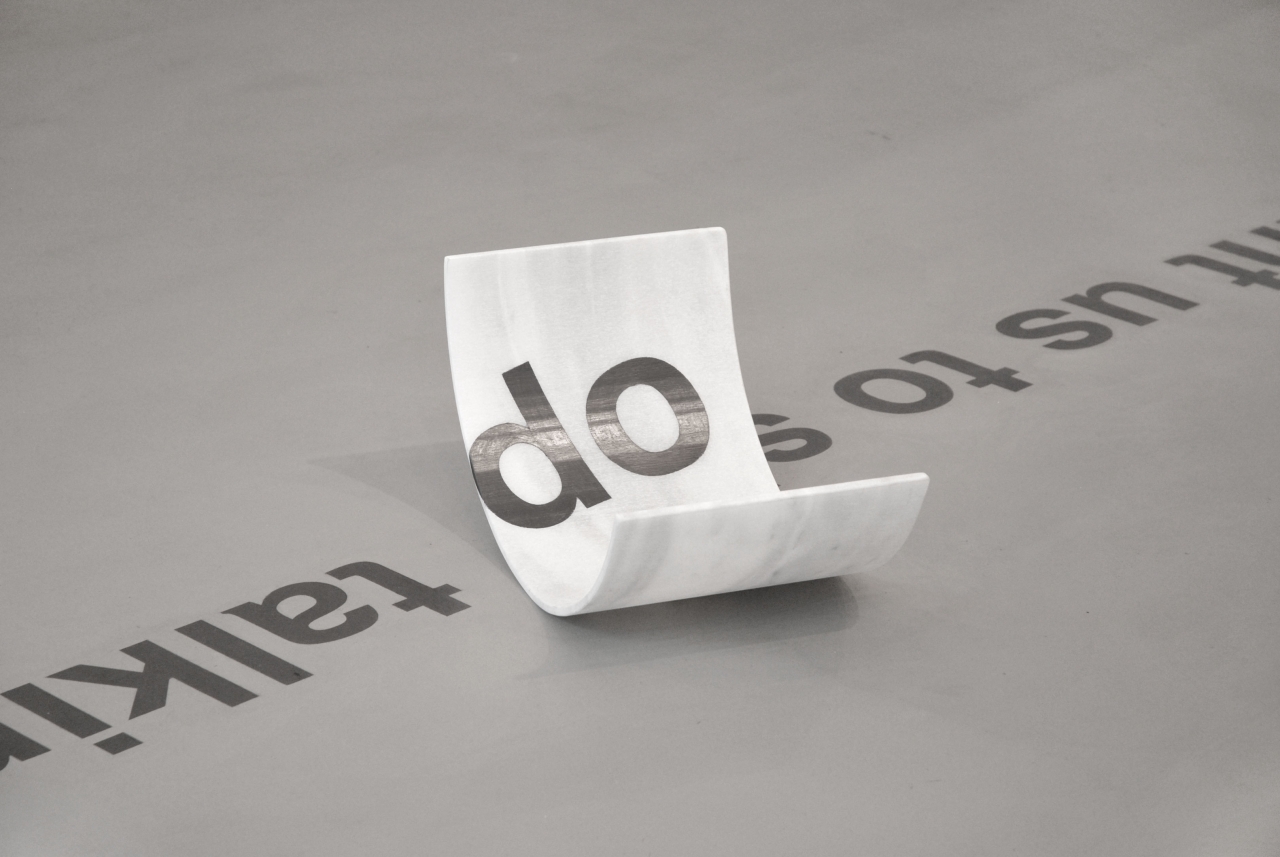
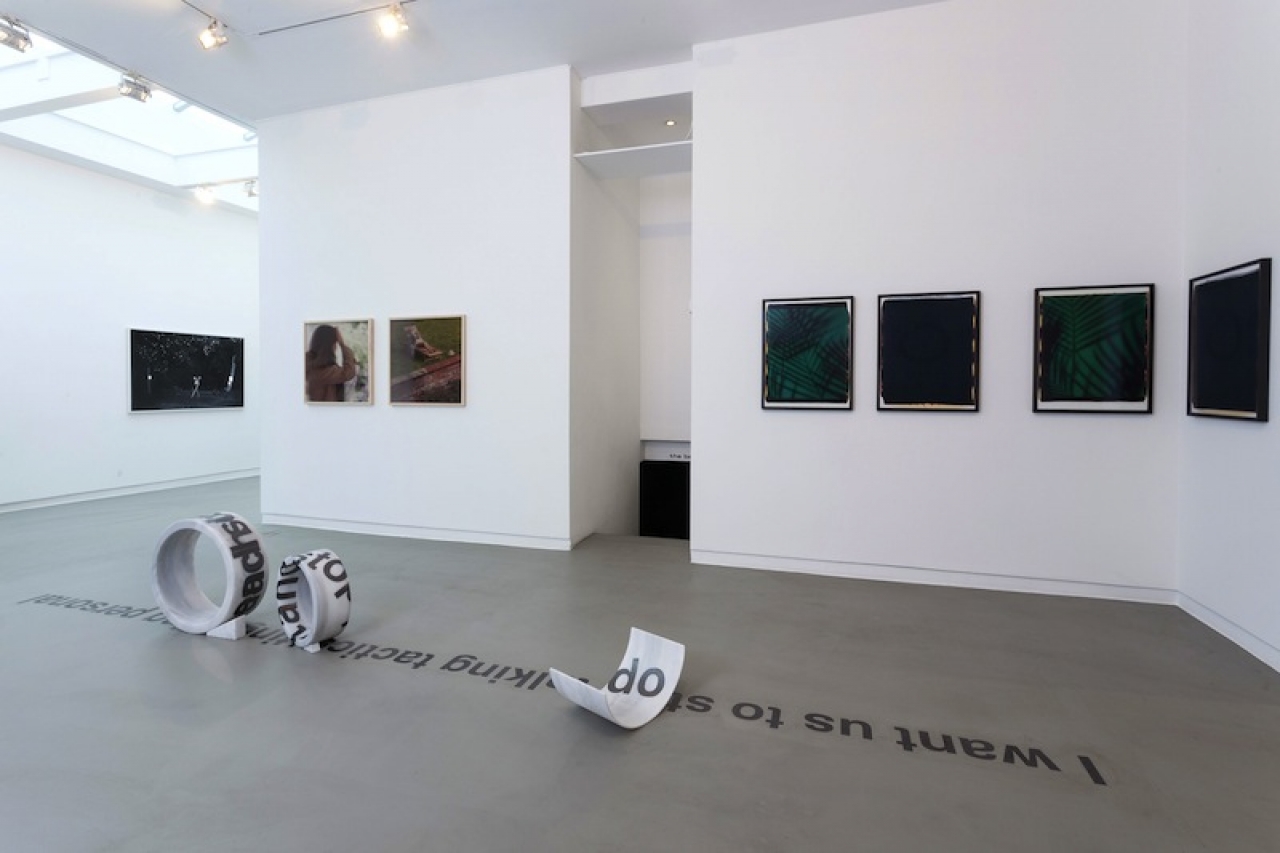
IG: ‘Your installations have been considered as “sensitive spatial installations, formed by architecture, art-historical references, performative aspects and social dynamics”. How do these elements parley with and are adopted by your practice?’
AP: ‘I do have a kind of sensitivity of what site-specificness, architecture or even the space itself means according to the artist’s relation with those notions. The spatial decision that is being taken by an architect is something that always fascinates me, both in terms of being a challenging process as such and of redrawing certain directions from these given conditions. I am talking about choreography and choreography of the viewing. In this case there is an extra aspect for me that comes and meets those architecture elements and the performative aspects. The art historical references probably meet my need to learn from art history. Some colleagues and friends would have said more correctly that I am interested on how someone can perform history, so the art history stops operating individually and becomes an idea of the past within its relation to the future. I go back to the art history and especially to modernity, because basically that is the moment that introduces the idea of the new. Jennifer Steetskamp, describes me as the archeologist of the new and I find this term interesting because it contains a contradiction; the archeologist is excavating the new. I do find and see my self within this contradiction and through it I want to point out with a certain irony that we probably live in the times of a failure, failure of the new. Some people will argue against this position, saying “who says that we are actually failing”. Since I do believe in the circles and in the fact that we are repeating ourselves as well, the art history comes and somehow supports my argument, even if this interpretation of repetition of mine comes from a complex. So the social dynamics derive from my effort to capture the fact as such and there is a certain risk that I take through this effort, since I am in the time of happening. The dynamics is something that nobody can really control. I am very interested on observing the dynamic relation that the viewer has with the object and the spatial settings though. In 2010, they have invited me at the Van Abben Museum for making a project “Untitled (this is a historic opportunity for us)”. My engagement with the quotations started from this project. I was searching for quotations every day and I had a weekly possibility to set up the quotation that I have chosen at the museum. This work was based on its performative aspect, setting up the quotation was part of a performance; me making the quotation on the wall using graphite. And the reason why I mention this project is because the Greek Crisis started then. My work was not about the Greek Crisis. It was about me being the mediator, creating the possibility of one of the Van Abben walls to turn into the ‘post it’ of the city for certain aspects, about meeting each other and reacting on now. But it was very interesting, because whatever I would have put on this wall, has been always associated with the Greek crisis by the viewers, since I am a Greek Artist. For me, it was really interesting to observe this certain reaction, since just two of the quotations were about the Greek crisis and the rest sixteen of them were not. Through this project I immediately realized what site-specificness means. Being part of a context that has a specific power, influences everything related to our practices. The context texts you and you can’t really resist; it’s a role that has been given to you. That was a really educational moment for me. I will never be able to escape from the fact that I am a Greek artist, living in the Netherlands at the time of crisis. And especially at the time of the Greek crisis. This filter is always there and this is how people read my work.’
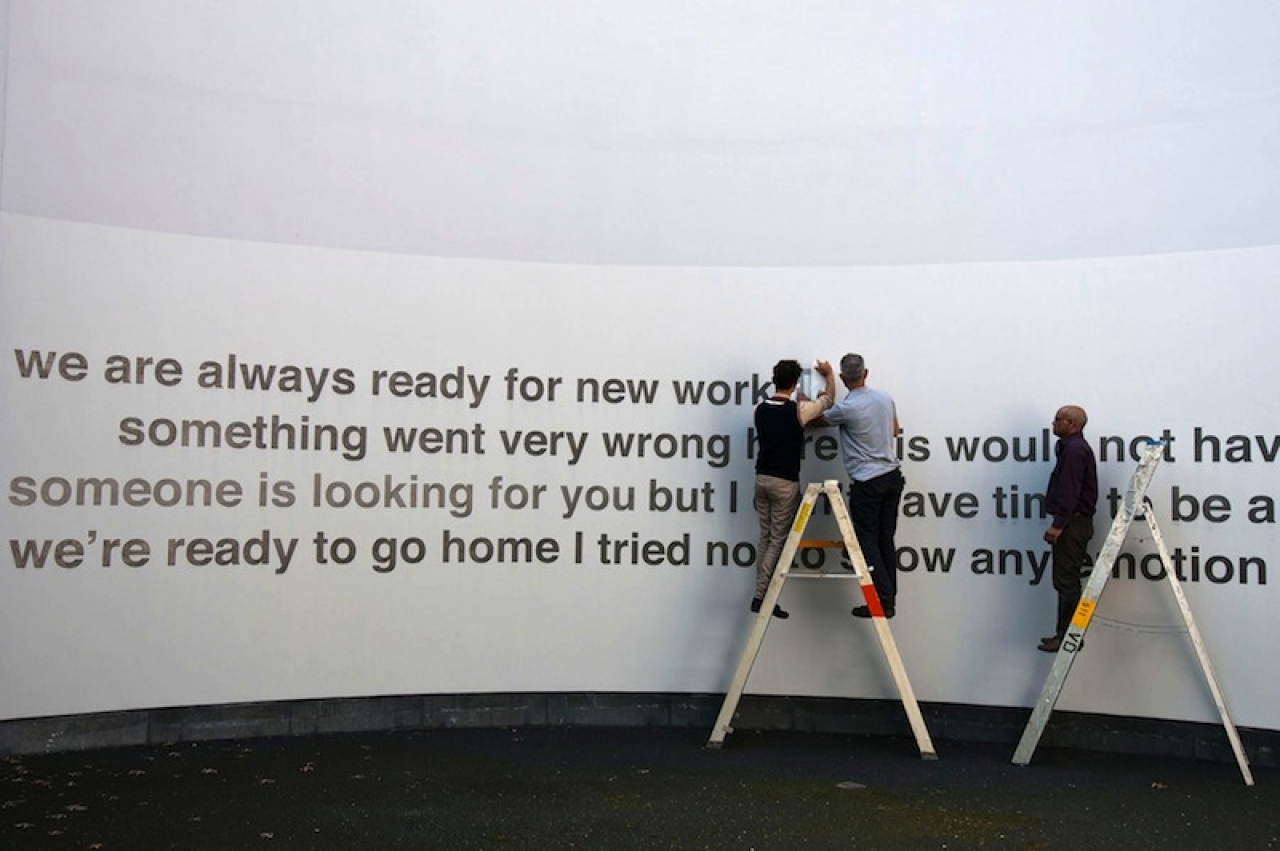
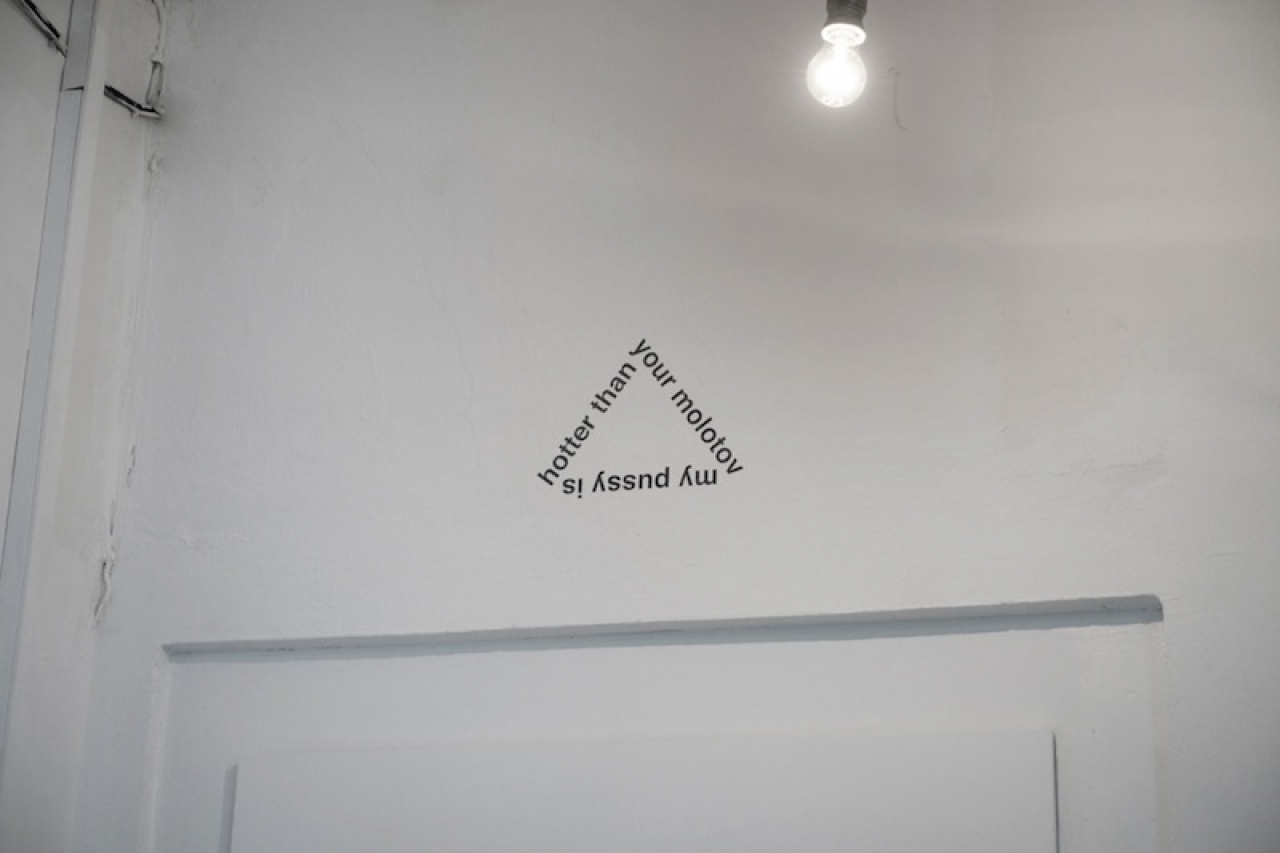
IG: ‘The trans-historical comparison has been an influential notion for your work. It can also be regarded as a “trend” term both for the post-modern theories and artistic practices. Which is its the (theoretical) point of view of your work, since there is at least an aesthetic re-contextualization and re-evaluation of forms and ideas from the past through various contexts and materials in your practice?’
AP: ‘The fear and the social aspects, as we talked about them before, leads us to the idea of what grabs the attention. Of course I can be regarded as being part of this trend, because there is a certain move at the moment of the attention. There is always a fear of becoming a trend within certain “trendy” notions or topics, because they are up to now. I am not really conscious about that. I do follow the flow and by very basic instinct I have interests and certain notions that drive my attention for decades. The Russian Avant Garde was one of my first loves in the arts; it was one of the first exhibitions that I have been to, through Costakis collection. I am reading or exchanging some thoughts with curators, art historians and theorists and what I tell them most of the times, is that I am driven by basic forms and that I believe on the archetypical. It’s exactly what represents the modernity and includes notions and forms that have appeared in the ancient times and they re-appear nowadays reformed. Maybe I can’t explain it very well, because it is much more emotional rather than scientific, but I will give you an example. The triangle, the circle and the square are the basic forms of emotions; emotions but at the same time rational elements, mathematics and spatial decisions. So I find interesting that the dynamic that the archetypical creates, affects the basic instincts of humanism. I am fascinated by this idea of promising, of re-designing a future that reflects to the very old. That’s exactly the moment that things are clicking and that makes me move forward. I know that many artists are working with the modernity and since I am getting older certain layers of nostalgia and therefore trans-historical elements appear to my reality and practice. Through these trend notions I do make a critique but at the same time I am optimistic, not optimistic as an idiot though. But the term of idiot is another and socially sensitive topic and we can talk about it during another discussion. What I can say for sure is that my work is based on the materiality of forms and has a certain layer of irony or humour.’
IG: ‘You have been recent invited to create a work for Or Gallery in Berlin for the group exhibition Pillar Huggers. The show was inspired by the theories of Asger Jorn, one of the driving forces of Cobra Movement. Through his writing Re-constructing philosophy from an artist viewpoint, he claims that he tries the first complete revision of the existing philosophical system. What was your work about and how can be related to the abstract notion of ‘vandalism’.’
AP: ‘Well, actually I was wondering the same thing. What happened with Asger is that I was not very familiar with him. I was introduced to his work by Hilda de Braun, the curator of the exhibition, who does a research on his practice. I was very interested in the Cobra movement since their theories were parallel with the modernity movements but at the same time and up to a certain point, almost on the other side. It really fascinates me the fact that Asger was kind of an anarchist of Modernity. On the one hand he was saying yes to the movements of modernity but on the other hand, he was always critiquing and somehow sabotaging them. He was very interesting personality as well. I came across with some of his texts, like the “What is an Ornament” which was also the starting point of reference of this exhibition and I also got to know better the Institute of Comparative Vandalism in Scandinavia. I am very much into the notion of the Comparative Vandalism, since I did this research for the exhibition, and the social and political situation in Greece plays an important role in it. I am talking about the demonstrations, the actions, the things that are happening in the public space combined with a kind of sensitivity that mostly the wests have about the heritage protection and about commenting or behaving through and in the public space. So what find very intriguing in the Vandalism and in the aesthetics coming out of it, is that operates as a pottery that I could drive things out of it, since its purpose is not necessarily the aesthetics but the communication or the reaction. So the notion of vandalism, the way that applies to the public space and the reactions of the anti-aesthetics that creates are educative elements, since I do believe that I am very aesthetical, that might be regarded as the weakness of my work. So my work has references from the modernity; I look at it extensively. Through my project “RETROACTIVE” at Hessel Museum of Art a couple of years ago, in CSS Bart Gollege in New York, I was looking at the work of Blincy Palermo, an artist who influenced me a lot. He was an abstract and minimalist painter in a way but he was looking at the Russian Avant Garde as well. He has this famous collage, a triangle piece that is called the Mirror Object. In 1969 he made this blue triangle work, which was basically a blue triangle, placed above a door. What I did for this exhibition talking about Ornaments, was that I took this reference as an Ornament that I was related with and I combined it with a quotation, with which I came across when I was walking in Athens. There was a graffiti quotation on a wall, saying “my pussy in hotter than your molotov”. And for me this moment of confrontation was really amazing, since this quote remains in between the enemies and in between us; or us becoming the enemies. It was very a weird and full of humour reaction on violent situations, such as demonstrations in Athens and at the same time there was a kind of erotic gesture in this reaction. What I did for the exhibition after all is that I picked exactly that phrase, talking about Ornaments, talking about modernity, abstract and anarchy and placed it above the door in a triangle form. The way that Blincy Palermo did it, was about stating the archetypical, as he placed the triangle in this archetypical space and created harmonies along with the door itself. And that’s something that you often see in Ornaments in Architecture, in Art History and even in the Primitivism or the Folk Art. This is how I kind of connected my self with Blinky Palermo, through this work of mine at least; and then definitely with Asger.’
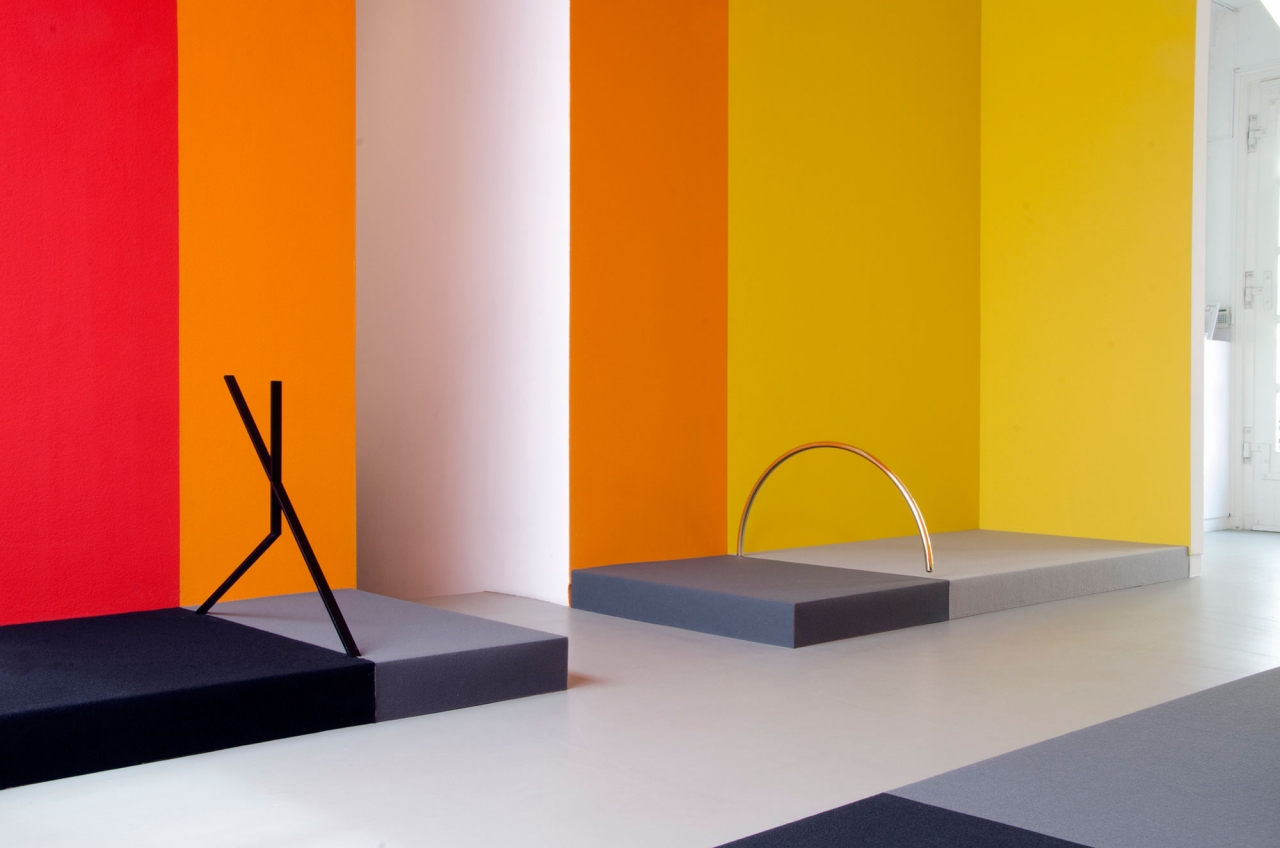
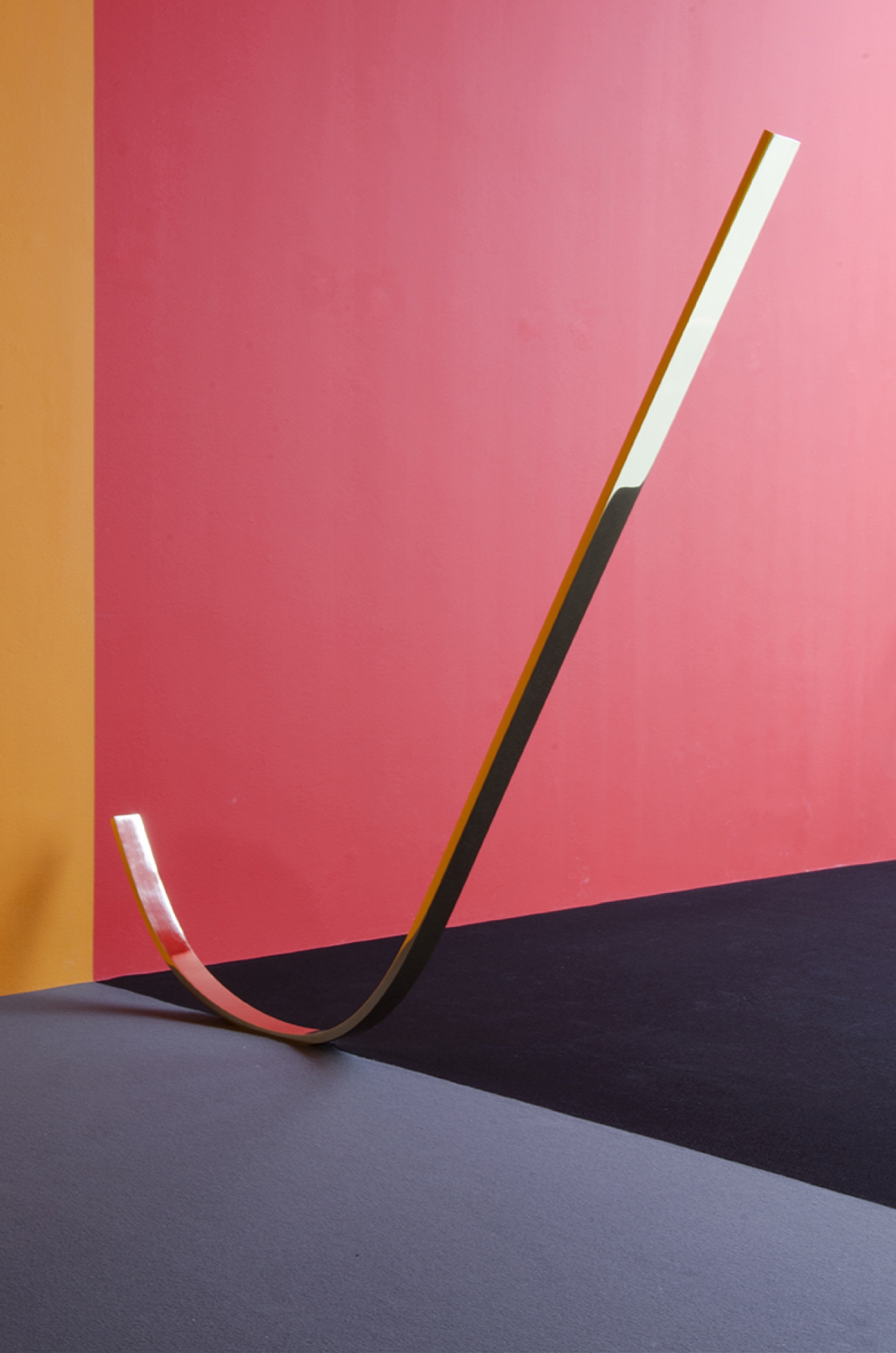
IG: ‘There is an increasing corporatization of almost every aspect of the human experience. Especially in the art-world, there are artists, curators, museums that they attempt to signal an anxiety about this tendency through critiquing this commercial take over. How do you see your work in this context?’
AP: ‘I don’t know. I will share my doubts with you, because I don’t have a clear answer on this. I do understand what Ryan says and he is probably right, but at the same time I try to find varying aspects of the work. If I take a look on my past, when I was working more with independent and non-commercial spaces, I have always been trying to find a way to make it possible for my work to be exhibited without fee. And every time, according to the conditions, I am trying to figure out how I will make the work more accessible to the public. I had a student of mine once, and she told me how antidemocratic and how over-commercialized a gallery is according to her. I was thinking about it and it’s funny enough that when you visit a gallery you just open the door and go inside without paying any fee. In the Netherlands at least, you have to pay a fee for visiting a museum, even though, especially the collections, the works are coming from the taxes that the citizens pay. I disagree on the fact that people have to pay the fee for the collection. So, on the one hand yes, I think there is an over-commercialization, but from the other hand galleries are open to the public. And of course as artist I am aware of this context, and there is a commercial aspect in this, but that’s the reason why the gallery is there. It’s important to understand that there are contradictions between this commercial aspect and the reality. Of course you need to survive though, that’s a practical factor. I always find interesting that there are parts of my work that are critiquing the financial structure, some of them through quotations that have do with the crisis; Collectors, public or bank collections do buy my work as well. And it’s almost ironic sometimes, indeed. I regard this phenomenon as very interesting, as it plays an important role on who finally benefits or not by this certain process, by these interactions between the artists and the galleries, the museums and the institutes. And in these terms, it is too complicated to catch. What Asger finds problematic as well is that we are adopting the financial terms for putting value to the arts and I regard this is as an already wrong concept. The value of the work has not to do only with the commercial aspect and the availability, for sure not. But this is how we agree to agree and look at those things. And at the same time I do work with people and I do need to live and there are people living around me. So there are relations that surround us and the most important thing is that at least we are not hypocritical. And I can not be hypocritical. I think that I am participating in a fair relationship and definitely I do take the responsibility of it. I am not sure. I do believe that there is certain hypocrisy in there, even for myself then, I might can’t deny that.’
IG: ‘What are your future plans?’
AP: ‘Oh, that’s the advertisement part. Well, I am super excited at this point. I have several projects that are coming up the next few months, some of them are old productions and some new productions. I am always interested in this juxtaposization as I have mentioned before; taking something away from its original context, placing it somewhere else and changing it not only by architectural terms but by taking certain decisions within the spatial strategies as well. For example I am taking the parsleys from the exhibition of Montage, the solo show I had at Annet Gelink Gallery last summer and I am placing them at Galleria Enrico Astuni in Bologna in Italy. The show has the title “Raccontare un luogo – (Tales of a place)” and is curated by Lorenzo Bruni. I am also very happy, since I am making a new commission work now for the Biennale of Thessaloniki curated by Katerina Gregos, in which I am staying on the line of connecting the dynamics and the performative aspects of the work, of capturing public memory on a critical point. I recently did a research on Costakis collection and mainly on archive of the collection. Costakis was keeping an archive, which he gave to the State Museum of Contemporary Art in Thessaloniki, the owner of the collection. So, what I do now is combining this idea of capturing now and at the same time I am going back to the times of revolution. The Russian Avant-Garde, grows at the time of revolution and at this point this condition is related to now, without making any promises around this issues. What I am also doing this period is making a work called “Throw hands”. In american slang english throw hands means let’s fight, but the same time the title has also the poetical idea of throwing hands. During my research in the archive of the collection at Thessaloniki, I came across with Gustav Klutsis work, a main character of whom I kind of draw things out, since I take works out of the archive and I turn them into references of my work. I want to make you excited about it, I really am. Of course Art Basel is coming up as well and I am showing a work on CCA in Glasgow on September during a group show, called the Shock of Victory and is curated by Remco de Blaaij and related with the one year anniversary of referendum in Glasgow. I am still working on it, so I can not reveal more. But anyways I am really looking forward to the next upcoming period.’
‘Thank you very much Antonis.’
‘Thank you too.’
